The Search Shift You Can’t Ignore Think about your own habits. When you need an answer—whether it’s the best marketing strategy, the nearest coffee shop, or a product comparison—do you scroll through Google, or do you just ask ChatGPT, Gemini, or Copilot? For millions of people in 2025, the answer is increasingly AI tools first, search engines second. This change is not subtle. It’s fundamentally reshaping how people discover information, make decisions, and engage with businesses. Recent studies highlight the scale of this disruption: Organic traffic is falling fast: Google’s AI-powered “Overviews” can cause traffic drops of 15–64% across industries, while nearly 60% of searches now result in zero clicks (Forbes, 2025). AI adoption is surging: U.S. usage of AI tools jumped from 8% in 2023 to 38% in 2025, while still, 95% of people continue to use search engines monthly (Search Engine Land, 2025). AI search is gaining traction: In February 2025, 71.5% of respondents reported using AI tools for search, although nearly 80% still preferred Google or Bing for broad queries (Search Engine Land, 2025). This paints a clear picture: Google isn’t dead, but it’s no longer the only gateway to discovery. To thrive in this new landscape, businesses must optimize for both traditional search engines and generative AI platforms. That’s where Generative Engine Optimization (GEO) comes in. What Is GEO, and How Is It Different from SEO? Generative Engine Optimization (GEO) is the practice of shaping your content so that AI engines like ChatGPT, Gemini, Bing Copilot, and Perplexity select, cite, and recommend your business directly in their answers. Here’s how it differs from traditional SEO: Aspect Traditional SEO GEO (Generative Engine Optimization) Ranking Target Google, Bing SERPs AI engines: ChatGPT, Gemini, Perplexity User Experience Browsing lists of links Direct, conversational answers Optimization Focus Keywords, backlinks, metadata Authority, clarity, structured data Outcome Click-throughs to websites Branded mentions in zero-click AI answers Competitive Edge Standard practice Early adopter advantage If SEO was about being seen, GEO is about being spoken for. Why GEO Is Urgent in 2025 1. AI Search Is Becoming the Default AI platforms are no longer side tools—they’re becoming the first stop for knowledge and decision-making. ChatGPT alone reached 2 billion visits in May 2025, a 30% surge since late 2024 (Open Partners, 2025). 2. Organic Traffic Is Declining Gartner forecasts a 25% drop in traditional organic search volume by 2026, as users turn to generative AI for instant answers (Gartner, 2024). Businesses relying only on SEO will see diminishing returns. 3. Consumer Behavior Is Changing AI isn’t just replacing search—it’s replacing discovery. By 2025, 22% of shopping journeys begin on AI platforms, more than doubling in just two years (Open Partners, 2025). 4. AI Engagement Is Rising Prompt usage on ChatGPT grew nearly 70% from January to June 2025, with shopping-related prompts doubling to nearly 10% of all activity. Even more striking: click-through rates from ChatGPT answers tripled in just three months, climbing from 2.2% in March to 5.7% in June (Bain & Co, 2025). This means users aren’t just asking AI questions—they’re taking action based on AI recommendations. The Risks of Ignoring GEO Enhanced Brand Presence: Your business appears directly in trusted AI answers, not buried in results pages. Improved User Experience: GEO content is concise, authoritative, and AI-friendly—earning user trust. Local and Personalized Visibility: Generative engines adapt answers to user context, making GEO vital for local intent searches. Competitive Advantage: Early GEO adopters are seeing up to 40% boosts in visibility and in some cases 100% growth in AI-driven inquiries. In a world where search traffic is declining, but AI-driven actions are rising, ignoring GEO isn’t just risky—it’s business sabotage. Tangible Benefits of GEO Enhanced Brand Presence: Your business appears directly in trusted AI answers, not buried in results pages. Improved User Experience: GEO content is concise, authoritative, and AI-friendly—earning user trust. Local and Personalized Visibility: Generative engines adapt answers to user context, making GEO vital for local intent searches. Competitive Advantage: Early GEO adopters are seeing up to 40% boosts in visibility and in some cases 100% growth in AI-driven inquiries. How to Prepare Your Business for GEO Restructure Your Content Use schema markup and structured formats (FAQs, Q&A). Focus on clear, digestible answers. Cite authoritative sources to boost credibility. Monitor AI Mentions Track how your brand appears in ChatGPT, Gemini, and other engines. Adapt content to maintain or improve your placement. Blend GEO with SEO Keep your SEO foundation strong—it still drives significant discovery. Layer GEO on top to capture the AI-driven zero-click market. Frequently Asked Questions 1. Will GEO replace SEO? No. GEO complements SEO. You need both to maximize visibility across traditional and generative engines. 2. Is GEO relevant for small businesses? Yes—perhaps even more so. GEO helps smaller brands punch above their weight by getting cited in AI answers without relying solely on expensive ad campaigns. 3. How soon should we adopt GEO? Immediately. With traffic already declining and AI adoption surging, early adoption secures a lasting competitive edge. Conclusion: GEO Is Mission-Critical The way people search has changed forever. Google still matters—but it no longer commands the stage alone. With AI-driven platforms becoming the default for answers, businesses must embrace GEO to remain visible, trusted, and relevant. Generative Engine Optimization isn’t about chasing clicks—it’s about showing up in the conversations that shape customer decisions. The brands that act now will define tomorrow’s leaders. The rest risk being left out of the answer. We love to hear from you Contact Us
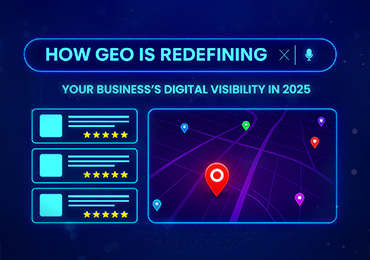
When I first heard someone say, “You can actually rank your website on ChatGPT and AI search,” I thought it was just another buzzword trend. I had spent years working on traditional SEO — fighting for positions on Google, optimizing keywords, and building backlinks. But suddenly, the conversation shifted. People weren’t only typing their questions into Google anymore. They were asking ChatGPT, Perplexity, and Bing Copilot. That’s when it hit me: if AI is the new search engine, then I need to adapt. And so began my journey into what I like to call ChatGPT SEO — optimizing my website so that it doesn’t just rank on Google, but also shows up in AI-powered answers. Realizing the Shift in Search Behavior I remember the first time I saw a friend ask ChatGPT for the “best event photographer in Perth.” Instead of scrolling through ten links, they got a clean, summarized answer in seconds. And I asked myself: “If my website isn’t part of that answer, am I even visible anymore?” This was the turning point. I realized AI search ranking wasn’t optional — it was the future. If people are finding answers through AI, then I had to make sure my business was included in those answers. Step 1: Learning How ChatGPT Reads the Web At first, I thought ChatGPT had its own secret database. But then I learned something important: when it needs fresh or detailed information, it fetches data from the web. And just like Google, it looks at: Website authority and trust (EEAT: Experience, Expertise, Authoritativeness, Trustworthiness) SEO fundamentals like titles, meta descriptions, and keyword relevance Content clarity and formatting — structured answers are easier for AI to extract Accessibility — whether the site allows crawlers and has a sitemap It was like déjà vu. The rules weren’t entirely new — they were just evolving. Step 2: Making My Website Accessible to AI The next step was about access. I realized if AI bots like ChatGPT’s crawler, GPTBot, couldn’t access my website, it was invisible. That meant updating my site settings, ensuring my sitemap was submitted, and double-checking that I wasn’t blocking these bots by mistake. It felt like unlocking the front door of my website and putting up a big sign saying, “Yes, you’re welcome here.” That small change made me confident that my site could now be discovered by AI crawlers. Step 3: Writing Content Like I’m Answering a Friend I used to write blog posts in long, formal paragraphs, stuffed with keywords. But ChatGPT doesn’t work that way. It prefers direct, conversational, and structured content. So, I changed my approach. Now, I: Write clear headings (H1, H2, H3) so the content is easy to scan. Add FAQ-style sections with direct answers. Keep sentences short, crisp, and conversational. Use bullet points and tables for comparisons. Example: Instead of a long paragraph about “AI SEO strategy,” I now write: What is an AI SEO strategy? An AI SEO strategy is optimizing your website so AI tools like ChatGPT and Bing Copilot can easily read, trust, and share your content. It includes: Allowing AI bots to crawl your site Writing structured, answer-focused content Submitting your sitemap to Google & Bing Building authority with backlinks Targeting featured snippets Step 4: Submitting My Website to Search Engines Another crucial part of my journey was registering my website in the right places. I signed up for: Google Search Console Bing Webmaster Tools Here, I uploaded my sitemap.xml and verified ownership. It felt like enrolling my website into AI’s official directory. Once I did this, I started noticing faster indexing and better ChatGPT visibility. Step 5: Aiming for Featured Snippets Here’s a little secret I discovered: ChatGPT often pulls answers directly from Google featured snippets. This was a lightbulb moment for me. If I could structure my content to appear in featured snippets, I had a higher chance of being cited by AI search too. Example short definition: AI search optimization is the process of making your website content easy for AI tools to read and trust, using structured answers, schema markup, and authority building. Step 6: Building Authority (The Hard but Rewarding Part) I won’t sugarcoat this part — building authority takes time. I started reaching out to industry blogs, sharing guest posts, and getting my business mentioned in local news articles. I also made sure my business had strong local SEO signals — Google Business Profile, local citations, and consistent NAP. Slowly, I saw the results. My content wasn’t just ranking on Google; it was being surfaced in AI-driven answers. Step 7: Creating Content That Feels Human The biggest lesson of all? AI loves human content. Instead of robotic keyword-stuffed blogs, I now write in first person. I share my experiences, struggles, and wins. I explain concepts with real examples. And most importantly, I write to help people — not just to rank. My Biggest Takeaway ChatGPT SEO is not about gaming the system. It’s about clarity, trust, and accessibility. When I made my website open to AI crawlers, structured my content like real answers, submitted my site to search engines, and built genuine authority, I noticed something amazing — my website started appearing not just in search results, but in AI-generated answers too. Final Thoughts Ranking on ChatGPT and AI search isn’t magic. It’s a mix of the old (traditional SEO) and the new (structured, conversational content). The formula for success comes down to: Accessibility (let AI crawlers read your site) Clarity (answer questions in a structured way) Authority (backlinks and trust signals) Humanity (real, conversational writing) I’m still on this journey, but one thing is clear: SEO for ChatGPT is the future, and AI search optimization is the bridge. If you want AI ranking success, start today. Because tomorrow, people won’t be “Googling” as much — they’ll be “ChatGPT-ing.” And when they do, you want your website to be part of the answer. We love to hear from you Contact Us
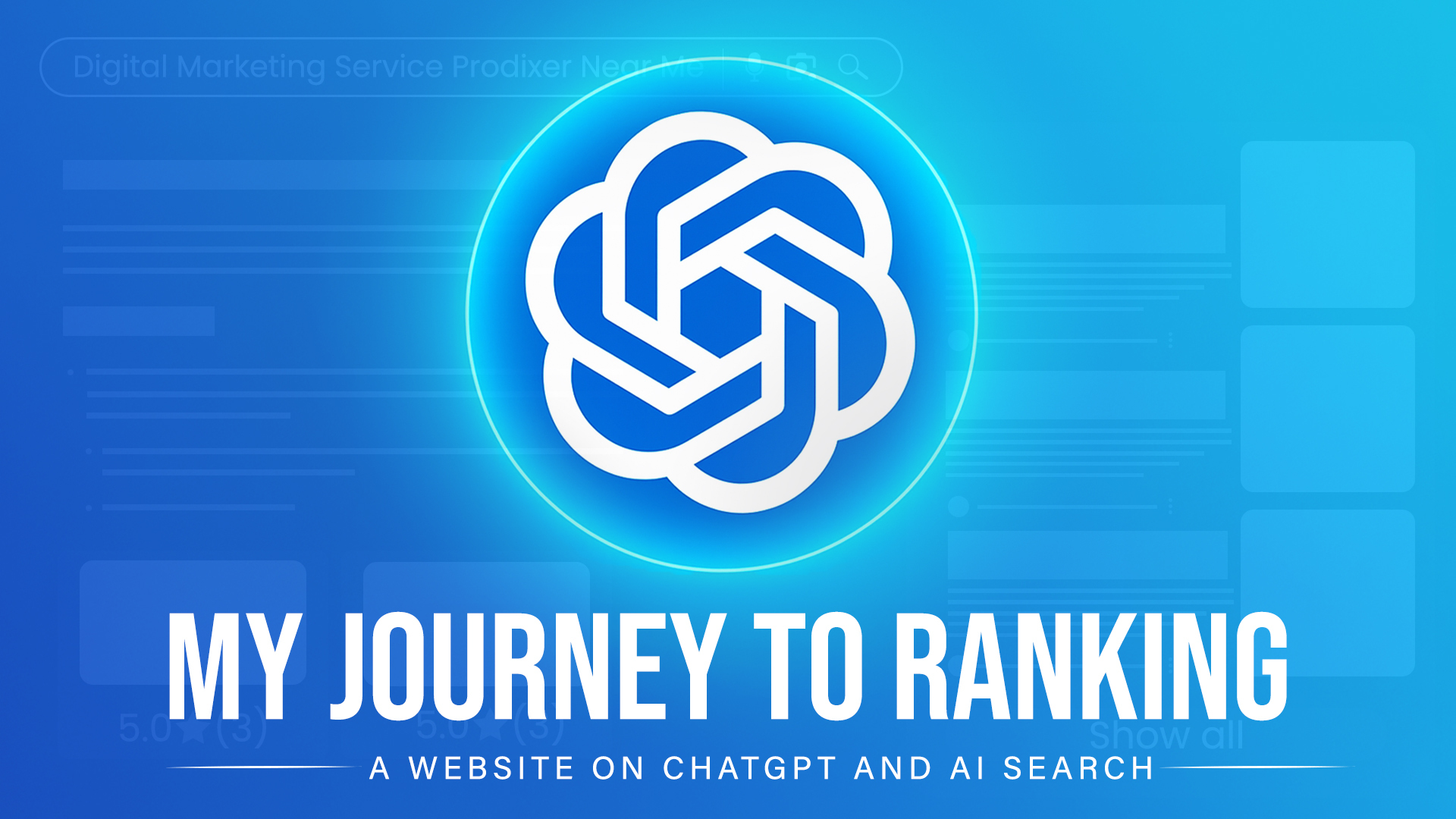
When your website fails to rank, it’s tempting to blame content or backlinks. But often, the real problem lies deeper—your site architecture. If search engines can’t crawl your pages efficiently, or if users get lost navigating your site, your SEO efforts will underperform. The solution? A strategic site structure that eliminates crawl traps, improves user experience, and boosts rankings. Let’s break down common problems businesses face—and how different types of site architectures can solve them. Problem 1: Search Engines Can’t Crawl Your Website Properly Issue: Orphan pages, confusing navigation, and too many clicks from the homepage make it hard for Googlebot to find and index content. Impact: Important pages remain invisible in search results, no matter how well they’re optimized. Solution: Hierarchical Architecture (Tree Model) Think of this as: A clear family tree for your website. Homepage → Categories → Subcategories → Pages. Example: Home → Blog → SEO → Technical SEO → Crawlability. Why it works: Creates logical pathways for crawlers Groups related content together, building keyword relevance. Prevents pages from getting buried too deep (the 3-click rule). ???? Best for: eCommerce stores, blogs, and service websites with layered offerings. Problem 2: Users Drop Off During Processes Issue: Complex sign-up flows, course lessons, or multi-step forms frustrate users. Impact: High bounce rates, low conversions, and poor engagement signals that hurt rankings. Solution: Sequential Architecture (Linear Flow) A step-by-step structure that guides users like a straight road. Example: Home → Step 1 → Step 2 → Step 3 → Completion. Why it works: Reduces confusion, keeps users on track. Great for funnels, tutorials, or onboarding. Sends positive engagement signals to search engines. Best for: SaaS platforms, e-learning portals, and conversion-driven landing pages. Problem 3: Content Exists, But Authority is Weak Issue: You publish lots of content, but none of it ranks strongly. Google sees isolated pages instead of a connected knowledge hub. Impact: Missed opportunities to build topical authority. Solution: Matrix Architecture (Interlinked Model) Instead of strict hierarchy, this allows cross-linking between related content. Example: A blog on “Site Architecture” links to “Internal Linking”, which links to “Technical SEO”. Why it works: Builds a web of contextual links. Distributes link equity across pages. Helps Google recognize content clusters and expertise. Best for: Blogs, knowledge bases, or any content-rich site (like Wikipedia). Problem 4: Dynamic Websites Trap Crawlers Issue: Marketplaces, travel sites, or SaaS platforms generate dynamic URLs that confuse crawlers (endless filters, session IDs, duplicate content). Impact: Crawl budget wasted, rankings diluted. Solution: Database-Driven Architecture (Dynamic + Optimized) Pages are generated on demand from a database, but with SEO best practices applied. Example: Real estate site where users search by location, price, or property type. Why it works: Provides personalized, scalable pages. Requires technical fixes like canonical tags, clean URL parameters, and XML sitemaps. Balances flexibility with crawlability. Best for: Marketplaces, SaaS platforms, eCommerce sites with thousands of products. Best Practices That Solve Site Architecture Problems Regardless of the structure you choose, apply these rules to keep SEO and UX strong: Use clean, descriptive URLs. Limit clicks to 3 or fewer from the homepage. Implement breadcrumbs for context. Build internal link hubs (pillar pages) to strengthen clusters. Avoid duplicate navigation paths. Ensure your XML sitemap matches your site’s actual structure. Mistakes That Keep Businesses Stuck Even with good intentions, many sites fail because they: Leave orphan pages unlinked. Use overcomplicated navigation menus. Forget to optimize for mobile-first users. Create too many dynamic URLs without canonicalization. Frequently Asked Questions (FAQs) 1. What is the best site architecture for SEO? The best architecture depends on your website type. For most businesses, a hierarchical structure works best because it organizes content in clear categories, making it easier for search engines to crawl and for users to navigate. 2. How does site architecture improve crawlability? A strong architecture creates logical navigation paths and keeps important pages close to the homepage. This ensures that Googlebot can discover and index pages efficiently, preventing orphan pages and crawl waste. 3. Which site architecture is best for eCommerce websites? Hierarchical architecture is usually best for eCommerce stores, as it organizes products under categories and subcategories. However, if the store has thousands of products, a database-driven structure with SEO-friendly URLs and sitemaps may be more effective. 4. What is the 3-click rule in site architecture? The 3-click rule suggests that any page should be reachable within three clicks from the homepage. This makes it easier for users to find content and for crawlers to access deeper pages. 5. How does internal linking support SEO within site architecture? Internal links distribute link equity across pages, help Google understand relationships between content, and guide users to relevant resources. In matrix-style architectures, internal linking is especially powerful for building topical authority. Final Takeaway: Architecture is SEO’s Hidden Ranking Factor Most businesses focus on keywords and backlinks but ignore the infrastructure that holds everything together. By choosing the right site architecture—Hierarchical, Sequential, Matrix, or Database—you can solve crawlability issues, improve UX, and give search engines exactly what they need to rank your site higher. Audit your site structure today. Fixing architecture may not just boost rankings—it can transform how users experience your brand online. We love to hear from you Contact Us
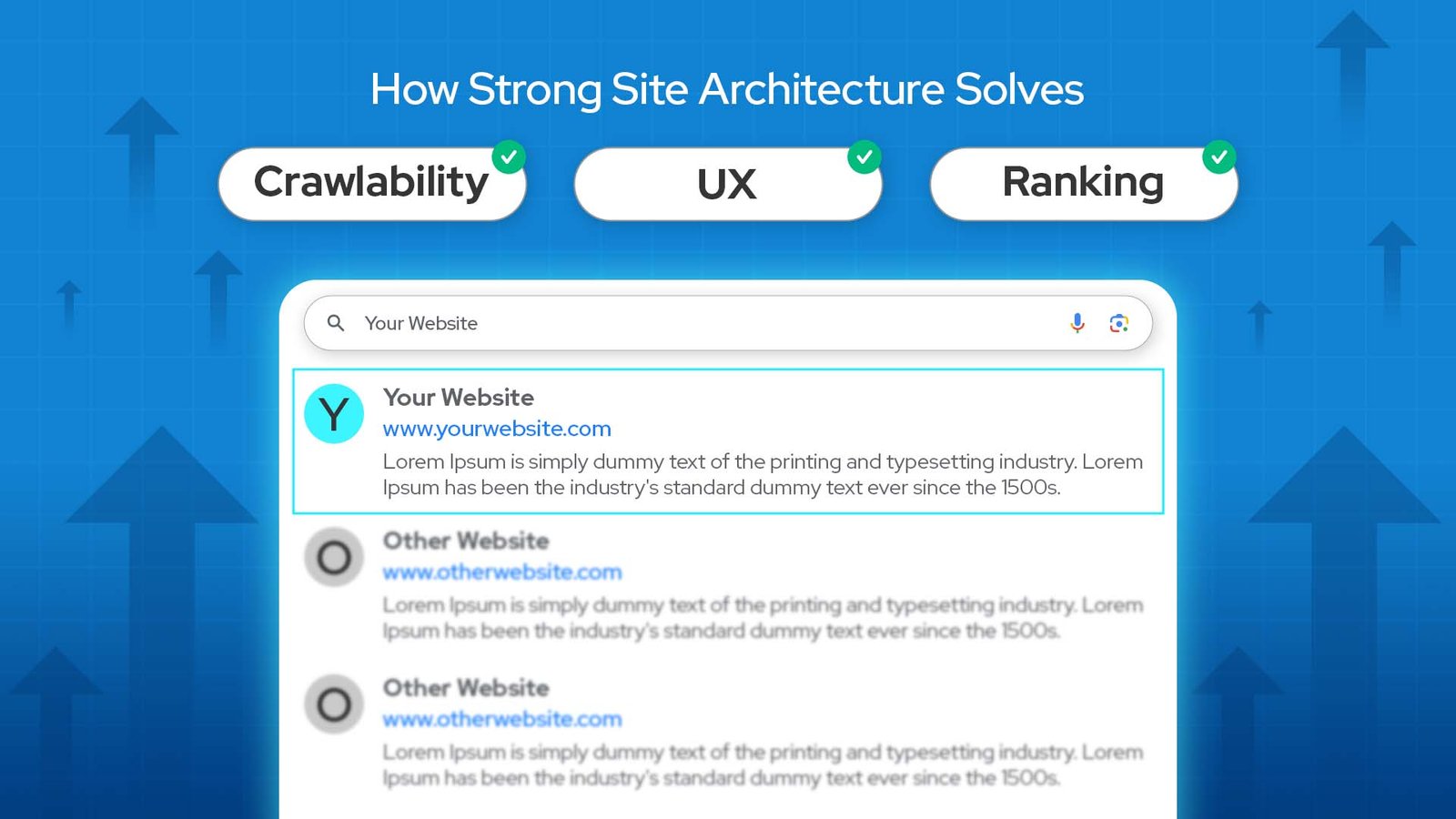
Introduction In a world overflowing with brands, standing out isn’t just about having a catchy logo or a clever tagline — it’s about crafting a consistent, authentic identity that resonates deeply with your audience. This is where Kapferer’s Brand Identity Prism comes in — a powerful framework used by leading businesses and marketing professionals worldwide to define and strengthen brand identity. Whether you’re a student learning the fundamentals of branding, a professional refining brand strategies, or a business owner seeking market differentiation, understanding this model can transform how you approach brand building. What Is Kapferer’s Brand Identity Prism? Developed by Jean-Noël Kapferer in 1996, the Brand Identity Prism is a visual tool that breaks down a brand’s identity into six interrelated facets. It doesn’t just describe what a brand is — it explains how a brand communicates, how it is perceived, and how it builds long-term relationships with its audience. Kapferer’s model is still relevant today because it balances both internal brand values and external customer perceptions, ensuring that the brand remains consistent across every interaction. The Six Elements of the Brand Identity Prism The prism is split into two sides: External (Social) — How the brand appears to the outside world. Internal (Self-Image) — How the brand sees itself and wants to be perceived. 1. Physical Definition: The tangible, visible aspects of a brand — logo, colors, design style, product packaging, and visual cues. Example: Apple’s sleek, minimalist product design and monochrome color palette instantly communicate innovation and premium quality. Tip for businesses: Your physical elements should be instantly recognizable and consistent across all platforms. 2. Personality Definition: The human-like traits of your brand — expressed through tone, communication style, and marketing voice. Example: Nike’s bold, motivational voice reflects determination, energy, and high performance. Tip for businesses: Define your brand’s “character” in a way that aligns with your target audience’s values. 3. Culture Definition: The core principles, ethics, and values that guide your brand. This is the “why” behind your business. Example: Starbucks’ culture revolves around community, sustainability, and creating a “third place” for connection beyond home and work. Tip for businesses: Your culture should influence both internal operations and external communications. 4. Relationship Definition: The way your brand interacts with customers and the type of connection you foster. Example: Amazon builds its relationship on convenience, speed, and trust, reinforced by customer-first policies. Tip for businesses: Consider how every touchpoint — from customer service to social media — strengthens your bond with customers. 5. Reflection Definition: How your customers perceive themselves when they use your brand. Example: Harley-Davidson reflects the self-image of independence, adventure, and rugged freedom. Tip for businesses: Your reflection should match your audience’s aspirations. 6. Self-Image Definition: How customers want to be perceived because of your brand. Example: People wearing luxury brands like Rolex or Gucci may want to be perceived as successful and sophisticated. Tip for businesses: Understand your audience’s deeper motivations — not just what they buy, but why they buy it. How the Prism Works Together The six elements of the Brand Identity Prism are not standalone pieces — they work together to create a cohesive brand personality. A strong brand keeps external identity (physical, relationship, reflection) consistent with internal identity (personality, culture, self-image). When all six facets align, your brand becomes clear, consistent, and credible — making it easier to build trust and loyalty. Examples of the Brand Identity Prism in Action Apple Physical: Sleek design, minimalist packaging. Personality: Innovative, visionary, premium. Culture: Pushing the boundaries of technology and design. Relationship: Empowers users through cutting-edge products. Reflection: Creative, forward-thinking. Self-Image: “I’m ahead of the curve.” Nike Physical: Swoosh logo, athletic imagery. Personality: Motivational, bold, energetic. Culture: Pushing human limits, celebrating sportsmanship. Relationship: Inspires performance through storytelling. Reflection: Determined, strong. Self-Image: “I’m unstoppable.” How Businesses Can Use the Brand Identity Prism Step 1: Define Each Facet Clearly Sit down with your marketing team and write detailed notes for each of the six elements. Be honest about what your brand stands for. Step 2: Align Internal and External Messages Ensure your internal culture matches the way you communicate externally. Step 3: Keep It Consistent Across All Channels Your social media posts, advertisements, website, and even customer service scripts should reflect the same brand identity. Step 4: Revisit Periodically As markets evolve, brands need to adapt while keeping their core identity intact. Common Mistakes to Avoid Focusing too much on visuals and ignoring personality or culture. Inconsistency between brand messaging and actual customer experience. Overcomplicating the message with too many conflicting traits. Conclusion Kapferer’s Brand Identity Prism is more than just a marketing diagram — it’s a strategic blueprint for creating a brand that connects, inspires, and lasts. By understanding and applying all six facets, businesses can build identities that not only attract customers but also create lasting emotional bonds. When your brand identity is clear and consistent, it becomes a powerful asset — one that tells your story, builds trust, and sets you apart in a crowded market. We love to hear from you Contact Us

1. What Is the AI Transformation? AI transformation refers to the sweeping integration of artificial intelligence technologies into business processes, workflows, governance, and culture—not just technology stacks. According to McKinsey’s 2025 State of AI survey, only 1% of organizations have achieved full operational maturity, though 92% plan to increase investment, and 78% already use AI in at least one business function. This transformation involves workflow redesign, role redefinition, and new governance models, not just deploying tools. 2. How Is Artificial Intelligence Transforming? AI is transforming through multiple fronts: Generative AI (e.g. ChatGPT‑style models) automates content creation. Agentic AI (emerging in 2025) acts as virtual coworkers, autonomously planning multistep workflows Applied and industrial AI embed into manufacturing, healthcare, logistics, and beyond Organizations driving these shifts are moving beyond pilot projects to embed AI into value-generating core operations. 3. What Is the AI Transformation Methodology? A mature methodology involves: Clarifying goals —defining business outcomes AI should drive Creating governance models and ethical oversight (e.g. centralized risk/compliance hubs). Redesigning workflows —not bolt on AI, but rewire tasks and decision-making flows. Hybrid talent strategy —centralizing AI strategy while distributing technical and adoption roles across business units Continuous upskilling —embracing both technical and complementary human skills like ethics, critical thinking, teamwork 4. How Is AI Transforming the Way We Work? Workplace Shifts In a 2024 survey, employees are three times more likely than managers to believe AI will replace 30% of their tasks within a year, showing employee readiness exceeds leadership expectations McKinsey expects 12 million additional occupational transitions by 2030, mostly out of customer service, sales, and office support into roles with stronger human‑AI collaboration Generative AI tools now affect up to 50% of job tasks across industries, with 80% of US workers experiencing at least 10% task impact, and nearly 19% facing more than 50% Skill Evolution AI is raising demand for AI‑complementary skills—digital fluency, ethics, teamwork, resilience—wage premiums on these have risen sharply Employers are increasingly adopting skill‑based hiring over degree requirements for AI roles—between 2018–2024, demand for AI skills rose 21%, while university requirements declined 15%; AI skills now command a 23% wage premium. 5. How Is AI Transforming Daily Life? On the personal front, AI is increasingly embedded in daily habits: Virtual assistants (voice and text) help automate reminders, emails, scheduling. Personalized recommendations—shopping, news, health diagnostics—are powered by machine learning. Healthcare: AI‑based diagnostic tools, predictive analytics, and remote medicine are improving care and early detection. Transportation: rideshare routing apps, autonomous vehicle research, predictive maintenance optimization. Consumer AI is quietly reshaping routines, often without being labeled “AI,” offering efficiency, personalization, and real‑time decision support. 6. How Many Jobs Will AI Replace by 2030? Displacement and Creation The World Economic Forum’s Future of Jobs Report 2025 indicates 92 million roles will be displaced, but 110 million new roles will be created, resulting in a net gain of 78 million jobs globally by 2030 A Goldman Sachs estimate predicts up to 300 million jobs globally could be replaced by AI by 2030 (~18% of employment) The WEF also projects between 85 million jobs displaced and 97 million created, signaling both disruption and new opportunity Role‑specific Risk & Adaptability Microsoft Research identified 40 jobs most susceptible to AI automation, such as translators, content writers, customer-service reps, data analysts; and 40 relatively safe roles, including caregivers, plumbers, healthcare aides Executives like Anthropic’s Dario Amodei warn up to 50% of entry‑level white‑collar jobs may disappear in the next 1–5 years, potentially pushing unemployment sharply without proper adaptation 7. Sector-by-Sector Change: AI’s Reach Sector AI Effects and Opportunities Healthcare Accelerated R&D (up to $560 billion/year value), AI‑designed proteins, predictive diagnostics Marketing & SEO Generative campaigns, automated content creation, real‑time customer insights, SEO optimization with AI analysis. Graphics & Design Tools like image‑generation (DALL·E, Midjourney) enable rapid ideation, localization, and prototyping. Education Personalized learning, automation of administrative tasks, AI tutors. Finance Automated reporting, risk management, fraud detection, robo‑advisors. Global Industries Manufacturing automation shifting value chains toward high-skill roles; countries gaining via AI‑driven GVC upgrades. Software & IT AI tools like Copilot automate routine coding tasks; programmers focus on creative problem-solving; routine coding error rates reduced ~40%. 8. Effects of AI: Challenges and Opportunities Benefits Efficiency and productivity: AI saves an estimated 300 billion worker-hours annually Economic growth: AI could add trillions—IDC forecasts $19.9 trillion into the global economy by 2030, and AI’s GDP contribution around 3.5% by then. McKinsey reports $560 billion/year R&D lift. New job ecosystems: Growing fields include AI engineers, data scientists, ethics managers, AI trainers/annotators, human-AI coordinators. Challenges Job insecurity and stress: Surveys show 71% of US employees worry about AI’s impact; 75% fear job obsolescence. Uneven adoption: Only ~1% of firms are AI-mature; many struggle with leadership, governance, and integration. Skill mismatch: Millions may require reskilling—and human-centric abilities will matter more than ever . Final Thoughts: Knowledge & Awareness for All Artificial Intelligence transformation is not just technology deployment—it’s a sociotechnical revolution reshaping how we structure work, which skills matter, and what roles persist or emerge. With net global job gains possible, success depends on responsible integration, reskilling, and institutional readiness, rather than reactionary cuts. For students, professionals, and lifelong learners: embrace AI literacy, cultivate complementary human skills, and prepare for roles where human-AI collaboration is the norm. Awareness and proactive adaptation—not fear—are the keys to flourishing in the AI era. We love to hear from you Contact Us
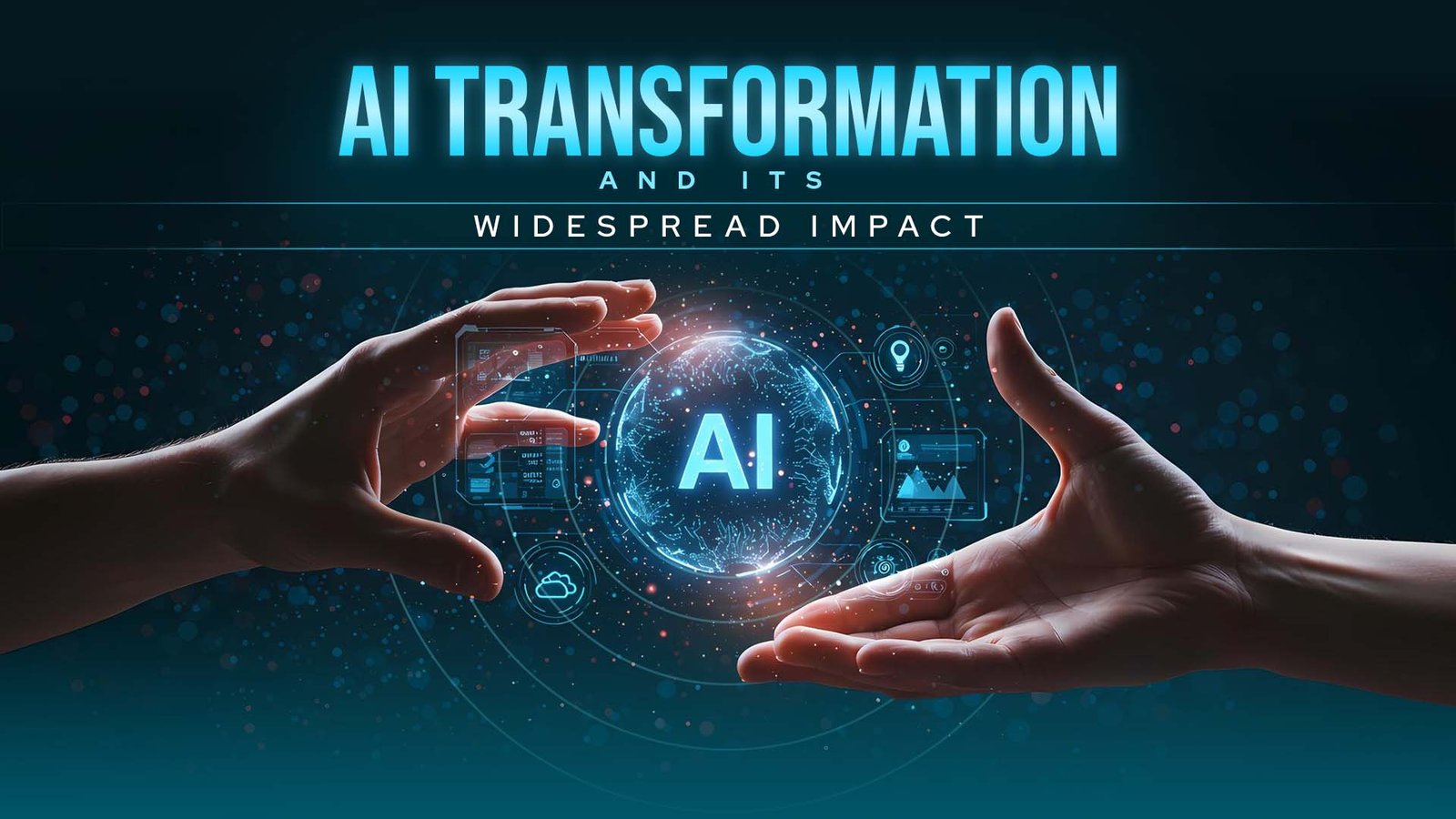
In the rapidly evolving digital landscape, Artificial Intelligence (AI) is transforming every facet of online experiences—none more so than Search Engine Optimization (SEO). From content creation to technical performance and hyper-local personalization, AI is reshaping how websites rank, engage, and convert. This blog explores the far-reaching impact of AI on SEO, Technical SEO, Local SEO, AEO (Answer Engine Optimization), GEO (Geographical Optimization), and Google's evolving AI-driven search models. Whether you're a business owner, marketer, or curious digital strategist, this guide aims to educate and inspire your approach to modern SEO. 1. The Impact of AI in SEO: A Paradigm Shift AI is not just a tool—it’s the backbone of the future of SEO. Algorithms now prioritize user experience, semantic relevance, and intent over mere keyword density. AI in SEO introduces: Smart Algorithms: Google’s RankBrain, BERT, and MUM understand context, meaning, and user intent more precisely than ever. Content Intelligence: Tools like ChatGPT, SurferSEO, and MarketMuse help optimize content for search relevance and user engagement. Search Behavior Analysis: AI analyzes click patterns, bounce rates, and dwell time to influence rankings dynamically. Benefits: Real-time insights and predictive analytics Enhanced keyword strategy and content clustering Improved SERP visibility through smarter content matching Drawbacks: Over-automation risks depersonalization Requires ongoing adaptation to algorithm updates 2. Technical SEO & AI: Enhancing Infrastructure with Intelligence AI can automate and elevate Technical SEO practices—ensuring faster websites, clean code, and better crawlability. Key Aspects: Automated Site Audits: AI tools detect broken links, indexing issues, and speed bottlenecks. Structured Data Implementation: AI simplifies the generation of schema markup for AEO and featured snippets. Log File Analysis: Predict how search bots interact with your site for better crawl budget optimization. Pros: Saves time with real-time fixes Improves technical health scores Cons: Dependence on tools can overlook strategic human input Some AI-generated fixes may lack context 3. Local SEO & Personalization with AI AI amplifies Local SEO by delivering hyper-personalized results based on user location, preferences, and real-time behaviors. How AI Personalizes Local SEO: Geo-Fencing: AI detects a user’s location to serve nearby solutions. Natural Language Processing: Understands local search intent (e.g., “best cafe near me”). Review Sentiment Analysis: AI interprets local reviews to rank local businesses more accurately. Benefits: Boosts visibility for “near me” searches Higher engagement with local audiences Smarter Google Business Profile optimization Challenges: Data privacy concerns Results may vary with search history personalization 4. AEO, GEO, SEO: Understanding the Trio The traditional SEO landscape is evolving into a three-dimensional strategy involving: SEO – Search Engine Optimization Optimizes web pages to rank higher in traditional search engines like Google and Bing. AEO – Answer Engine Optimization Focuses on structured data, voice search, and direct answers (think: Google’s Featured Snippets or Siri responses). GEO – Geographical Optimization Targets users based on their location, language, or regional preferences, often integrated with Local SEO. Element Focus Tools AI Role SEO Search visibility Google Search Console, Ahrefs Rank analysis, content matching AEO Voice & direct answers Schema.org, NLP tools Intent recognition, featured snippets GEO Location targeting Google Maps, GMB Geo-personalized delivery 5. Google AI Mode: A New Era of Search Google is transitioning from keyword-matching to intent-based discovery using AI-first technologies like: Search Generative Experience (SGE): Uses generative AI to provide comprehensive, summarized answers. MUM (Multitask Unified Model): Understands complex queries across languages and formats (text, video, images). Gemini AI: Google’s latest AI assistant, designed to support deeper task resolution and search assistance. Why It Matters: Shift from links to answers: Google wants to solve, not just link. Visual and voice-first interfaces: Users will increasingly rely on voice, image, and conversational search. What It Means for You: Optimize for questions, not just keywords. Focus on E-E-A-T (Experience, Expertise, Authoritativeness, Trustworthiness). Add FAQ sections, schema, and rich content formats. 6. The Magic of Combining SEO, AEO & GEO When SEO, AEO, and GEO work together, the result is a truly intelligent digital presence. Here’s how: SEO brings users to your platform. AEO answers their questions immediately. GEO ensures they see content that’s contextually and geographically relevant. Together, they create a harmonized, intent-driven strategy that improves rankings, engagement, and conversions. Use Case Example: A user in Delhi searches “best AI-powered SEO services near me.” SEO ranks your page. GEO identifies your business location. AEO pulls up a direct answer from your FAQ-rich schema block. That’s not just SEO—that’s search intelligence. Final Thoughts: AI is the Future of Search AI is not replacing SEO—it’s redefining it. Businesses and creators that embrace AI-powered strategies will not only survive in the new search era but thrive. Whether it’s through better visibility, smarter answers, or geo-targeted experiences, AI is unlocking SEO's full potential. We love to hear from you Contact Us
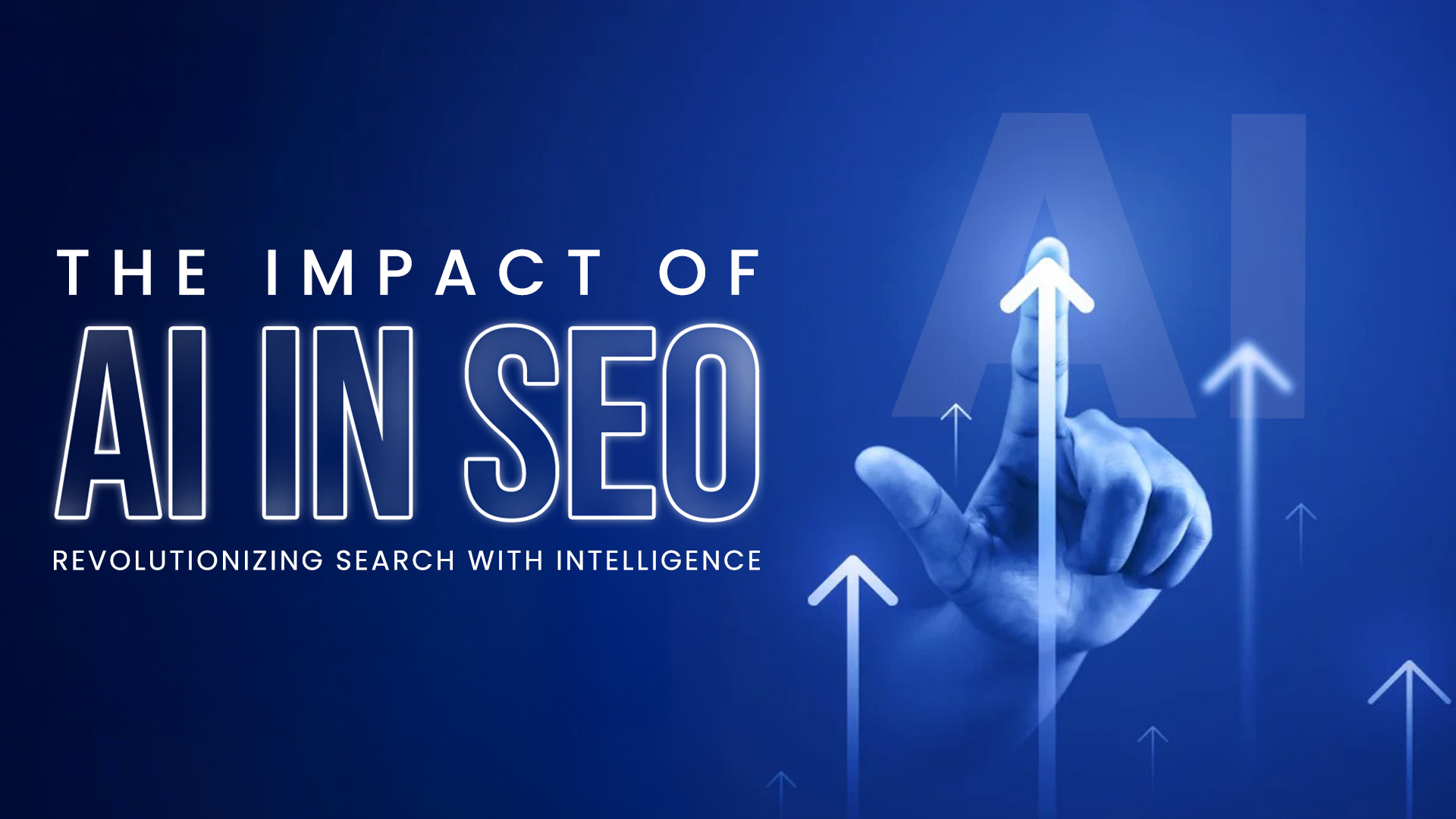
Why UI/UX Design Matters More Than Ever In a world full of digital interfaces, users don’t just want something that works—they want something that works well and looks great. That’s where UI and UX design step in. Whether you’re a student curious about creative tech careers, a professional looking to upskill, or a business leader planning your next digital product—understanding UI/UX can unlock better ideas, better products, and better outcomes. "94% of first impressions are design-related." - This grabs attention and reinforces the importance. What is UI Design? UI (User Interface) Design is the process of crafting the visual layer of a digital product. It involves designing everything users see and interact with on the screen: Layouts and grids Buttons and icons Typography and color schemes Visual feedback and animations UI design ensures the product is not just usable, but visually consistent, attractive, and aligned with brand identity. It’s the “look and feel” that creates the first impression. What is UX Design? UX (User Experience) Design focuses on how a product works for its users. It’s about the journey, the logic behind the interface, and making sure that every interaction is seamless and intuitive. UX design includes: User research Wireframing and prototyping Information architecture Usability testing The goal of UX is to solve user problems efficiently and provide a satisfying, stress-free experience. Key Differences Between UI and UX Although often used together, UI and UX serve distinct roles: Feature UI Design UX Design Focus Visual appearance User interaction & functionality Core Deliverables Colors, icons, layouts Flows, wireframes, prototypes Tools Used Figma, Adobe XD, Sketch UXPin, Balsamiq, Miro Outcome Attractive and consistent look Logical and usable experience What Should You Choose: UI or UX? If you’re deciding between the two as a career path or study focus: Choose UI if you love visual design, aesthetics, and creativity. Choose UX if you enjoy research, strategy, and understanding user behavior. However, modern design roles often blend both. Learning the fundamentals of both UI and UX makes you a more versatile and valuable designer. What Happens When You Combine UI and UX? Mixing UI and UX leads to powerful design solutions. When both work together: Products are intuitive and visually appealing Users complete tasks more efficiently Businesses see better engagement and satisfaction Think of UI as the 'presentation layer' and UX as the 'functional experience behind it. —together, they build complete, human-centered experiences. Popular Tools for UI/UX Design Starting your design journey? These tools are widely used and beginner-friendly: UI Design Tools: Figma – Real-time collaboration, browser-based Adobe XD – Prototyping and design combined Sketch – Popular on macOS for interface design UX Design Tools: Balsamiq – Low-fidelity wireframing Miro – Brainstorming and mapping user journeys InVision – Prototypes and developer handoff Hotjar – Visualize real user behavior through heatmaps These tools are often used together in professional workflows, creating an efficient design-to-development process. A Practical Example of UI/UX Design Working Together Imagine using an app where: The colors are calming and consistent Buttons are placed exactly where you expect them Navigation is smooth and logical You complete your goal without needing help You probably don’t notice the design—which is the goal of great UI/UX. It works so seamlessly that it becomes invisible. That’s the power of combining smart interfaces with thoughtful experiences. Basic Components of Good UI/UX Design Here are some foundational elements: UI Components: Grids and spacing Typography hierarchy Color and contrast Icons and visual cues UX Components: Clear navigation paths Consistent user flows Task efficiency Accessible content layout Together, they help users move through a product effortlessly and purposefully. Why More Businesses and Products are Focusing on UI/UX The digital competition is fierce—and good design is now a necessity, not a luxury. Businesses are investing in UI/UX because: It improves user engagement Reduces churn and drop-offs Increases conversion rates Builds long-term customer trust Cuts development costs by avoiding redesigns In short, great UI/UX design = better business outcomes. The Real-World Importance of UI/UX From mobile apps and websites to SaaS platforms and e-commerce portals, every digital product benefits from user-centered design. Here’s why: User Satisfaction – Happy users become repeat users Time Saving – Good design helps users achieve goals faster Accessibility – Inclusive design reaches more people Brand Value – Positive experiences build stronger brands Design decisions directly impact how people perceive and interact with technology. Common Misconceptions About UI/UX Let’s clear up some confusion: Misconception Reality ❌ “UI/UX is just about making things look nice.” ✅ It’s about solving problems through thoughtful design. ❌ “You need to be an artist to do UI/UX.” ✅ While creativity helps, logic, empathy, and research are just as important. ❌ “It’s only for big tech companies.” ✅ UI/UX is critical for any business—from startups to local services to NGOs. The Role of AI in Modern UI/UX Design Artificial Intelligence is transforming how UI/UX design works—not by replacing designers, but by enhancing their capabilities. How AI Supports UI/UX: Personalization: AI tailors content and layouts based on user behavior. Predictive UX: It anticipates user actions, making navigation smoother. Voice Interfaces: AI enables voice-based and conversational UIs, expanding how users interact with products. Design Automation: Tools now suggest layouts, fix accessibility issues, and streamline prototyping. Smarter Testing: AI analyzes user interactions faster, powering better design decisions. While AI handles patterns and data, designers bring empathy and creativity. Together, they create smarter, more human-centric digital experiences. Final Thoughts: UI/UX Is the Future of Digital Whether you’re designing your first app, learning a new skill, or thinking of revamping an existing product—UI/UX design is a foundational part of success. It brings together logic and creativity, strategy and storytelling, form and function. No matter your background, understanding UI/UX empowers you to create digital products that truly serve people—and that’s what technology is all about. We love to hear from you Contact Us
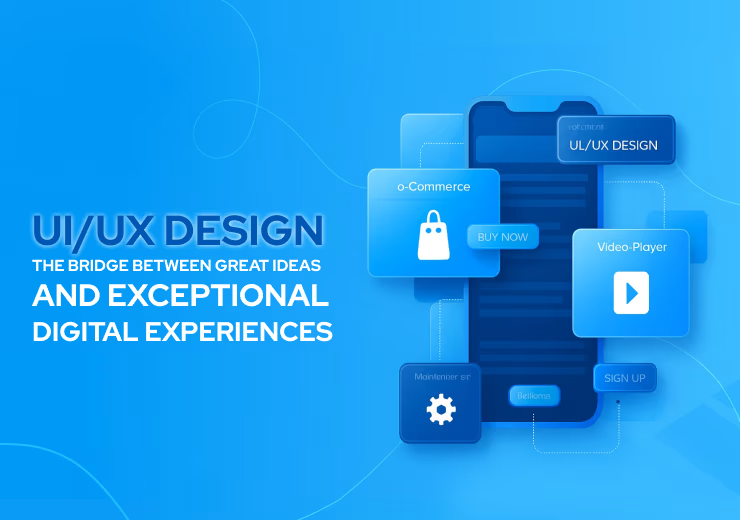
In 2025, a business website isn’t just a digital asset—it’s often your primary driver of leads and revenue. Whether you’re targeting customers in India, the US, the UAE, or anywhere else, your website needs to do more than just exist. It needs to convert. Studies show that users form opinions about a website in under a second, and nearly 70% of them bounce if the design or performance doesn’t meet expectations. With mobile usage surging, AI transforming user experiences, and conversion strategies becoming more data-driven, developers must rethink how websites are structured, optimized, and deployed. This guide explores what it really takes to build a high-converting website in 2025 — grounded in research, strategy, and global usability. Understanding What Makes a Website "High-Converting" A high-converting website is designed not just to attract visitors but to turn them into leads, customers, or subscribers. That means every element—from layout to load speed—works together to guide the user toward action. Key Conversion Goals: Generate inquiries or demo requests Increase purchases or bookings Grow newsletter subscribers Encourage trial sign-ups or app downloads Performance Benchmarks (2025): Conversion rate: 3–5% (depending on industry) Load speed: Under 2.5 seconds on mobile Bounce rate: Below 40% Session duration: Over 90 seconds Core Development Principles That Impact Conversions Technical foundation is critical. Poor code or architecture will hurt conversions even if the design looks good on the surface. Development Priorities: Use lightweight, modern frameworks like Next.js or Astro Host with global CDN support (e.g., Vercel, Cloudflare, Netlify) Optimize Core Web Vitals (LCP, FID, CLS) Ensure mobile-first design with adaptive breakpoints Implement schema markup for SEO and better SERP visibility Modern users — especially in countries with slower networks — expect fast, frictionless experiences. A one-second delay can drop conversions by up to 7%, according to multiple optimization studies. UX & Design Trends That Boost Conversions Today’s best-performing websites rely on clarity, simplicity, and psychology. What Works in 2025: Minimalist layouts: Clean interfaces reduce decision fatigue Sticky CTAs: Mobile users engage more when key actions are always visible Microinteractions: Feedback on hover/click builds user confidence Short-form lead capture: Fewer form fields = more conversions Visual storytelling: Icons, short videos, and illustrations help communicate faster Studies also show that personalized layouts and product suggestions — powered by user behavior — can increase engagement and repeat visits significantly. The Role of AI in Conversion-Focused Websites Artificial Intelligence is transforming how websites interact with users. Instead of a “one-size-fits-all” layout, AI tools can now adapt content, CTAs, and messaging in real-time. For example, a user visiting from the UAE might see pricing in AED, while someone from Canada sees CAD — automatically. Practical Use Cases: Chatbots with NLP to answer questions or guide to booking AI-powered heatmaps that analyze where users drop off Behavioral triggers like exit-intent offers or smart upsells Dynamic landing pages that change headlines or product highlights based on user location or interest Research shows that websites using AI for personalization see conversion rates increase by up to 200% compared to static experiences. CRO (Conversion Rate Optimization) Techniques Backed by Data CRO isn’t about changing button colors at random. It's a structured, measurable process. Tactics That Work: A/B Testing: Test different headlines, form placements, or CTA copy Shorten your forms: A 3-field form performs far better than a 7-field one Add urgency & scarcity: “Limited slots” or “Offer ends tonight” drives action Use real-time proof: “50 people booked in the last 24 hours” builds trust Leverage social proof: Reviews, ratings, case studies all reduce hesitation Tools like Google Optimize, VWO, and Hotjar are essential to implement and track these strategies. Optimizing for Global Audiences (US, UK, UAE, India, Australia) If your website is targeting multiple regions, your development must account for localization and global behavior. Must-Have Features: Currency switchers with geolocation Multi-language support with Hreflang tags Local timezone booking support GDPR, CCPA, DPDP compliance for global privacy laws Fast loading in all regions via CDNs and image compression Studies show that bounce rates are 30% lower when users land on content in their own language or currency — even if the product is the same. Realistic FAQs About Building High-Converting Websites in 2025 1. What’s a realistic conversion rate I should expect from my website? Most small-to-mid-sized business websites see 1.5% to 2.5% conversion rates. With proper CRO, layout improvements, and trust-building elements, you can push that closer to 4–5%, but it rarely happens overnight. It's a process of continuous refinement, not a magic switch. 2. How much does it really cost to build a conversion-focused website? If you’re hiring an agency, expect to spend anywhere from $1,500 to $5,000 for a basic service website and $5,000+ for global, multi-functional sites with custom features, SEO, and CRO work. Many companies waste budget on visuals and ignore performance — the real ROI is in strategic layout, speed, and messaging. 3. Do I need AI on my website right now, or is it just hype? You don’t need full-blown AI everywhere, but a smart chatbot or some behavior-based popups can make a real difference. Tools like Chatbase or Instabot can help you qualify leads faster. Think of AI as a layer to enhance user experience — not replace your core UX. 4. Can I get good conversions with WordPress, or do I need custom code? You absolutely can get high conversions with WordPress — if it’s well-designed and not bloated with unnecessary plugins. A custom-coded site (like in React/Next.js) gives you speed and flexibility, but if you’re tight on budget, a clean, focused WordPress build can still perform very well. 5. We already have a website. Do we need to redesign it to improve conversions? Not always. Start by fixing the basics — improve loading speed, simplify navigation, shorten forms, and add clear CTAs. Many businesses get better results just by improving their copy and layout. A full redesign is only needed if the current structure limits usability or performance. 6. How long does it take to start seeing results after optimizing a site? In most cases, you’ll see some improvement within 2–4 weeks of making CRO updates, especially with things like forms, CTAs, and speed fixes. Bigger results (like doubling your leads) usually take a few months — especially if paired with SEO and traffic strategies. 7. What if my traffic is low — can CRO still help? Yes, but results will be slower. CRO is more effective with steady traffic because you can actually measure and test changes. If your monthly traffic is under 1,000 visitors, consider combining CRO efforts with organic SEO or ads to bring more people in while you optimize for conversions. 8. We serve clients across different countries. What should we prioritize for global audiences? Focus on these 3 areas: Loading speed worldwide (use CDN) Currency & language support (at least English + region-friendly checkout or inquiry) Localized trust indicators — reviews from local clients or region-specific testimonials Small things like showing AED or USD, local phone numbers, or WhatsApp support can build huge trust with international users. Final Launch Checklist (Conversion-Focused) Before pushing a new website live, ensure the following: Website passes Core Web Vitals tests All CTAs are visible, benefit-driven, and tested Lead forms are optimized and trackable Chatbot and analytics scripts are working Pages are geo-optimized for international audiences Schema markup is applied for all key pages Mobile responsiveness is tested across real devices Consent banners and privacy links are in place Conclusion: A Website That Sells, Not Just Shows In 2025, users won’t stick around for slow, cluttered, or generic websites. With global competition just a click away, your website needs to act like your best salesperson — fast, persuasive, and personalized. By combining strong development practices, modern UX/UI, AI personalization, and data-driven CRO, you’ll not only increase your conversion rate — you’ll build trust and authority in any market you serve. We love to hear from you Contact Us

Introduction: Why SEO Audits Matter More Than Ever Search Engine Optimization (SEO) is no longer just about keywords and backlinks. In the age of AI and machine learning, search engines like Google have evolved to understand context, intent, user experience, and topical relevance at an entirely new level. If you’re not regularly auditing your website with modern tools and strategies, you’re missing out on major opportunities to rank—and convert. Whether you’re an agency, an in-house marketer, or a solopreneur, a modern SEO audit powered by AI and smart analytics can help you identify what’s working, what’s broken, and what your competition is doing better. Let’s explore how to perform a modern SEO audit using AI tools, data, and advanced methodologies. 1. Start with a Smart Crawler: More Than Just Broken Links Traditional crawlers (like Screaming Frog) are still useful, but today’s AI-powered SEO tools like SurferSEO, SEMrush Site Audit, Ahrefs, and ContentKing can help you go beyond the basics. What to check: Crawl errors and broken links (404s, redirects) Mobile-first compatibility Core Web Vitals scores JavaScript rendering issues Page indexing status XML sitemap and robots.txt validation AI Tip: Use ContentKing or JetOctopus for real-time crawling and monitoring. These platforms use AI to detect changes instantly—perfect for dynamic sites and enterprise SEO. 2. Analyze On-Page SEO with NLP Tools On-page optimization is no longer about keyword density. Search engines use Natural Language Processing (NLP) to understand the context, tone, and depth of your content. How to do it: Use SurferSEO or MarketMuse to analyze keyword clusters, NLP terms, and content gaps. Run your content through Google’s NLP API or tools like Frase.io to check how search engines interpret your content. Check H1s, metadata, headings, alt tags, and semantic structure. AI Advantage: Tools like Frase and Surfer suggest AI-optimized content structures that align with what Google ranks, based on real-time SERP analysis. 3. Core Web Vitals & UX Optimization With the rollout of Core Web Vitals, Google has officially declared user experience as a ranking factor. Your SEO audit must prioritize: How to do it: LCP (Largest Contentful Paint) – how fast your main content loads FID (First Input Delay) – how fast your page responds to input CLS (Cumulative Layout Shift) – visual stability during loading What to use: Google PageSpeed Insights Lighthouse Audit via Chrome DevTools Web.dev Measure tool AI Edge: Use NitroPack or Cloudflare’s AI tools to auto-optimize image delivery, lazy loading, and script execution. 4. Content Quality & Topical Authority Modern SEO values topical clusters and content depth. A proper audit includes analyzing how well your site covers a subject. Steps: Use Topic Modeling Tools like MarketMuse or Dashword to map out content clusters. Audit your internal linking to ensure logical topical structure. Identify outdated pages and consider merging thin content. AI Insight: Use ChatGPT or Gemini to analyze SERP leaders and summarize content structure, tone, and missing elements. 5. Technical SEO & Structured Data Search engines love structure. Your audit should check: Schema markup for articles, products, events, FAQs, etc. Canonical tags to avoid duplicate content Pagination, hreflang (for multilingual sites), and AMP where applicable What to use: Google Search Console – for schema errors Merkle’s Schema Markup Generator SEMrush Site Audit for technical alerts Pro Tip: Implement AI-generated FAQs with schema to boost Featured Snippets and People Also Ask placements. 6. Backlink Profile & E-E-A-T Analysis Backlinks still matter—but so do trust and credibility signals (Experience, Expertise, Authoritativeness, Trustworthiness). Tools to use: Ahrefs or Majestic – for backlink profile analysis Google Search Console – for toxic links Manual audit of author bios, credentials, and review signals AI Tip: Use SEOClarity or Clearscope AI to identify unlinked brand mentions and opportunities to build authority pages. 7. Competitor Benchmarking (with AI Power) You can’t improve what you don’t compare. Use AI to reverse-engineer your competitors’ SEO strategies. How to do it: Use SEMrush, Ahrefs, or SimilarWeb to analyze keyword gaps, backlink overlaps, and content topics. Use ChatGPT to summarize top-ranking pages and extract content themes or schema types. Conclusion: SEO in 2025 Needs AI + Strategy Performing an SEO audit in the age of AI isn’t just about checking boxes—it’s about understanding how algorithms think, what users want, and how to bridge the gap with intelligent tools. The secret to dominating search results today lies in blending traditional best practices with the power of AI-driven insights. We love to hear from you Contact Us
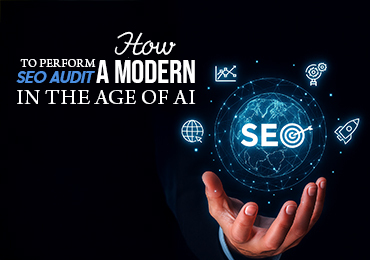
When the word "blockchain" comes up, the first thing that often springs to mind is cryptocurrency – Bitcoin, Ethereum, and the volatile world of digital currencies. However, as we navigate the technological landscape of 2025, it's crucial to recognize that the underlying technology, blockchain, possesses a far broader and more transformative potential that extends way beyond the realm of crypto. From streamlining supply chains in bustling markets to securing sensitive healthcare data across India, blockchain's inherent characteristics of transparency, security, and immutability are poised to revolutionize numerous industries. More Than Just a Ledger for Crypto: Understanding Blockchain's Core Strengths At its heart, blockchain is a distributed, immutable ledger that records transactions across many computers. This decentralized nature makes it incredibly secure and transparent, as no single entity controls the information, and every transaction is permanently recorded and verifiable by all participants. These fundamental strengths make blockchain an ideal solution for a wide array of applications far removed from the fluctuations of the cryptocurrency market. Unlocking Real-World Applications in 2025: As we move deeper into 2025, the practical applications of blockchain technology are becoming increasingly tangible: Revolutionizing Supply Chain Management: Imagine tracking the journey of Darjeeling tea from the estates to your cup with complete transparency. Blockchain enables businesses to create auditable and transparent supply chains, verifying the origin, authenticity, and condition of goods. This is particularly relevant for industries dealing with perishable goods, luxury items, and pharmaceuticals, ensuring consumers receive genuine and high-quality products. Securing Healthcare Records: The secure and tamper-proof nature of blockchain makes it an ideal solution for storing and managing sensitive healthcare records. Patients can have greater control over their data, and healthcare providers can access accurate and up-to-date information securely, improving efficiency and patient care. Think of the benefits for hospitals and patients across West Bengal. Transforming Voting Systems: Blockchain's immutability and transparency can enhance the security and integrity of voting processes. By creating a tamper-proof record of votes, blockchain could help reduce fraud and increase trust in democratic elections. While still in early stages of adoption for large-scale elections, pilot projects worldwide are exploring its potential. Empowering Digital Identity: In a world increasingly reliant on digital interactions, managing and verifying identity securely is paramount. Blockchain-based digital identity solutions can provide individuals with greater control over their personal information, reducing the risk of identity theft and simplifying online transactions. Ensuring Data Security and Integrity: Beyond specific industries, blockchain's fundamental security features make it valuable for any application requiring tamper-proof data storage, from intellectual property protection to land registry systems. Building Decentralized Applications (dApps) Beyond Finance: While many early dApps focused on decentralized finance (DeFi), we are now seeing a rise in dApps leveraging blockchain for social media, gaming, data storage, and more, offering users greater control and ownership of their data and digital assets. Enterprise Blockchain Solutions: Major corporations are increasingly adopting private or consortium blockchains to improve efficiency and security within their own networks and with trusted partners. These permissioned blockchains offer the benefits of the technology while maintaining a degree of control. Embracing Blockchain Beyond Crypto: For businesses and institutions across India, understanding the non-cryptocurrency applications of blockchain presents significant opportunities for innovation and growth. From enhancing the transparency of the jute industry to securing land records and streamlining government services, the potential for blockchain to drive efficiency and build trust is immense. The Future is Distributed and Secure: While cryptocurrencies brought blockchain into the mainstream consciousness, its true transformative power lies in its ability to create secure, transparent, and decentralized systems for a wide range of applications. As we move further into 2025, expect to see blockchain technology increasingly integrated into various aspects of our lives, far removed from the volatile world of digital currencies, promising a future where data integrity and trust are paramount. The revolution has just begun, and it extends far beyond Bitcoin. We love to hear from you Contact Us

Artificial Intelligence (AI) and cognitive automation are not just trends—they are transformative forces redefining how modern businesses operate, compete, and grow. From smarter decision-making to seamless operations, AI is driving a new era of innovation. By simulating key human cognitive functions such as learning, reasoning, and problem-solving, AI-powered systems can process and interpret massive volumes of data at speeds no human could match. This evolution is touching every sector—from retail and healthcare to finance and customer service—making operations faster, smarter, and more sustainable. Cognitive Automation: Bridging AI with Intelligent Automation Cognitive automation blends the predictive power of artificial intelligence with the efficiency of robotic process automation (RPA), enabling businesses to handle both rule-based and complex, judgment-intensive tasks. Unlike traditional automation, which relies strictly on predefined rules, cognitive automation learns continuously from data patterns and adapts to new trends. For example: Customer Service: AI chatbots handle routine queries instantly while escalating nuanced cases to human agents, improving both customer satisfaction and cost efficiency. Finance: AI algorithms monitor market trends, detect fraud, and refine investment strategies with unmatched accuracy. Key Use Cases of AI in Modern Business AI’s impact extends far beyond efficiency—it’s a catalyst for personalized experiences, innovation, and business agility. Here’s how industries are leveraging it: Retail: Personalized product recommendations powered by machine learning increase conversions and enhance the customer journey. Manufacturing: Predictive maintenance driven by AI minimizes downtime and lowers operational costs. Healthcare: AI revolutionizes diagnostics, drug development, and treatment plans, improving patient outcomes significantly. Marketing: Behavioral analytics enable hyper-targeted campaigns, driving higher engagement and ROI. The Strategic Edge: Why AI is a Business Imperative In today’s competitive environment, being future-ready means being AI-ready. AI is no longer just an advanced tool—it’s a core component of business strategy. Companies using AI to uncover insights, detect anomalies, and forecast outcomes can make smarter, faster decisions. According to McKinsey, AI could inject up to $13 trillion into the global economy by 2030. A PwC report reveals that businesses using AI for decision-making see efficiency gains of up to 25%. Organizations embracing AI today are better positioned to navigate shifting market demands and stay ahead of disruption. Navigating Challenges: What Businesses Should Consider Despite its transformative potential, AI adoption is not without challenges. Here are some key concerns: High Setup Costs: Implementing AI requires investment in infrastructure, data systems, and skilled talent. Data Privacy & Security: Ensuring compliance with evolving data regulations is critical. Ethical Concerns: AI must be designed to avoid bias and ensure fair outcomes—responsible AI frameworks are essential. Workforce Impact: While automation may displace certain roles, it also creates opportunities in AI development, oversight, and strategic planning. Looking Ahead: The Human + Machine Advantage The future of AI lies in synergy—where human creativity meets machine intelligence. Businesses that implement AI with a clear strategy and ethical focus will not only thrive but lead in their industries. From refining customer experiences to optimizing operations and forecasting market shifts, AI is the backbone of next-gen business transformation. Cognitive automation isn’t just about efficiency—it’s about unlocking true intelligence at scale. Bottom line? Those who harness AI effectively today are shaping the success stories of tomorrow. We love to hear from you Contact Us
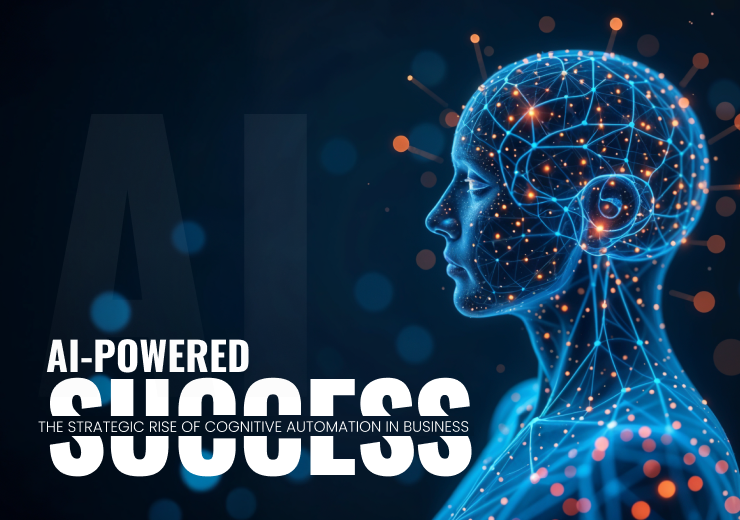
In 2025, digital transformation will no longer be a buzzword—it will be the defining factor of business survival and success. As organizations across the globe race to innovate, the convergence of emerging technologies like AI, automation, cybersecurity, and cloud computing is reshaping every industry. At Contrivance, we help businesses harness these transformations with future-ready IT infrastructure, custom software development, and intelligent automation solutions. In this blog, we’ll explore the top digital transformation trends of 2025 you can’t afford to ignore. 1. Hyperautomation Will Redefine Operational Agility Hyperautomation—the integration of AI, RPA (robotic process automation), ML, and analytics—is becoming a key enabler for enterprises seeking end-to-end digital operations. In 2025, organizations will move beyond automating repetitive tasks and focus on intelligent decision-making, process mining, and self-healing systems. Key Insight: Businesses that embrace hyperautomation will significantly reduce costs, increase accuracy, and improve speed across departments like finance, HR, customer support, and supply chain. 2. AI and Cognitive Tech Will Power Smarter Business Models Artificial Intelligence is moving from experimentation to real-world deployment across industries. From predictive analytics in retail, chatbots in healthcare, to fraud detection in finance, AI will enhance real-time decision-making and customer personalization. 3. Edge Computing Will Take Center Stage As IoT devices and real-time analytics become widespread, edge computing will emerge as the next evolution of cloud strategy. Instead of sending data to a central cloud, edge computing processes it closer to the source—reducing latency, enhancing speed, and improving data security. In 2025, expect industries like healthcare, manufacturing, and logistics to lead the charge in adopting edge-powered infrastructures. 4. Cybersecurity Becomes Business-Critical With more data being generated and shared across networks, cybersecurity is no longer just an IT concern—it’s a business enabler. In 2025, businesses will invest in zero-trust architectures, AI-driven threat detection, and regulatory compliance automation. According to IDC, by 2025, 60% of enterprises will make cybersecurity an essential part of board-level discussions. 5. Industry-Specific Solutions Will Surge Digital transformation is no longer “one-size-fits-all.” In 2025, solutions tailored to specific industries—healthcare, finance, logistics, education, etc.—will dominate the tech landscape. These vertical-specific platforms are more scalable, compliant, and aligned with real operational challenges. 6. Sustainable Tech Will Drive Green Innovation With ESG (Environmental, Social, Governance) goals gaining traction, companies will adopt green technologies, energy-efficient data centers, and sustainability dashboards that track their environmental impact. Businesses aligning digital transformation with sustainability goals will not only meet regulations but also appeal to conscious consumers and investors. 7. Cloud-Native Architectures Will Dominate Modern Development In 2025, businesses will shift more aggressively toward cloud-native technologies like microservices, containers (e.g., Kubernetes), and serverless computing. These solutions allow for faster development, easier scalability, and better resilience. 8. Remote and Hybrid IT Infrastructure Will Mature Work-from-anywhere is the new normal. In 2025, businesses will invest heavily in remote infrastructure management (RIM), cloud desktops, and automated monitoring tools to support hybrid workplaces without compromising performance or security. Key Takeaways for Businesses Digital transformation is not a destination—it’s a continuous evolution. 2025 will be marked by automation, AI, secure infrastructure, industry-specific platforms, and sustainability Businesses that act early and partner with the right technology providers will gain a decisive competitive edge. Conclusion Digital transformation is reshaping the way businesses operate, communicate, and deliver value. From automation and data analytics to AI-driven insights, organizations are leveraging technology to become more agile, efficient, and customer-centric. However, successful digital transformation goes beyond just adopting new tools—it requires a strategic mindset, continuous innovation, and a culture open to change. As technology continues to evolve, staying adaptable and embracing digital advancements will be essential for long-term growth and competitiveness. We love to hear from you Contact Us
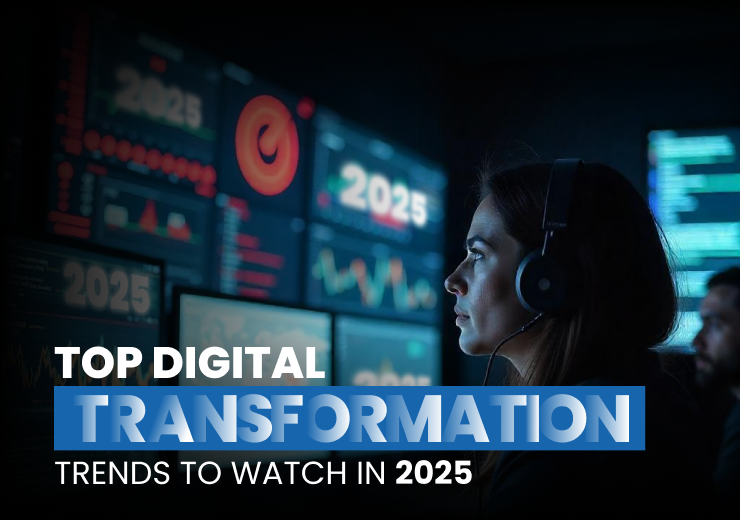
In the digital-first world, mobile apps are no longer just an extension of your website—they’re often the front door to your brand. Whether you’re building a product for customers or streamlining your internal processes, choosing the right app development strategy is crucial. The big question that arises is: Native or Hybrid—what’s the best path for your project? Let’s unpack the differences between native and hybrid app development, analyze the pros and cons, and help you make an informed decision that aligns with your business goals, timelines, and budgets. What Is Native App Development? Native apps are built specifically for a particular mobile operating system—typically Android or iOS. Developers use platform-specific languages and tools like Swift or Objective-C for iOS, and Java or Kotlin for Android. These apps are installed directly onto a user’s device and can access system resources like camera, GPS, or push notifications with optimal speed and responsiveness. Pros of Native Apps: Performance: Native apps are faster and more efficient because they are optimized for a specific platform. User Experience (UX): Offers the best UI/UX as it adheres to platform-specific guidelines. Access to Hardware Features: Seamless integration with device features like camera, GPS, and Bluetooth. Scalability: Easier to scale and maintain performance with increasing users. Cons of Native Apps: Cost: Requires separate development for each platform, increasing development time and costs. Time-Intensive: Maintaining two separate codebases doubles the workload. Talent Requirement: Developers must specialize in platform-specific languages and tools. What Is Hybrid App Development? Hybrid apps are built using web technologies like HTML, CSS, and JavaScript, and are wrapped in a native container using frameworks like Ionic, React Native, or Flutter. This enables them to run on both Android and iOS from a single codebase. While the core is built as a web app, the shell allows it to behave like a native app on mobile devices. Pros of Hybrid Apps: Cost-Effective: One codebase works for both iOS and Android, reducing development and maintenance costs. Faster Time to Market: Shared codebase speeds up development and updates. Wider Reach: Reach users across platforms with a single app. Simplified Maintenance: Bug fixes and feature updates can be rolled out across both platforms simultaneously. Cons of Hybrid Apps: Performance Limitations: May lag behind native apps in terms of performance, especially for high-load or graphics-heavy applications. Limited Access to Native Features: Some device functionalities may be harder to access or require plugins. Inconsistent UX: Might not fully adhere to design norms of each platform, leading to a less polished user experience. Native vs. Hybrid: Which One Should You Choose? The decision ultimately depends on several critical factors: 1. Project Complexity For complex, high-performance applications like gaming or real-time financial apps, native is the clear winner. For content-driven or MVP applications, hybrid apps offer a quicker and more affordable solution. 2. Time to Market Native apps typically require more time due to dual development. Hybrid apps let you launch faster, which is ideal for startups or businesses testing market response. 3. Budget Constraints If budget is tight, hybrid apps are cost-effective and ideal for reaching both Android and iOS audiences simultaneously. For businesses with a larger budget looking for the best performance and UX, native is a solid investment. 4. Long-Term Vision If your app will grow in complexity or scale significantly, starting with a native approach might save time and resources later. Hybrid apps are excellent for short-term needs, prototypes, or apps with moderate functionality. Conclusion In the battle of native vs. hybrid, there’s no universal winner—just the right choice for your unique goals. If your app requires top-tier performance, seamless UI, and deep integration with device features, native is your go-to. If you’re on a budget or need to get to market fast across platforms, hybrid is the smart route. By aligning your choice with your business strategy, user needs, and development capabilities, you’ll not only optimize your resources but also deliver an app that performs well and delights users. We love to hear from you Contact Us
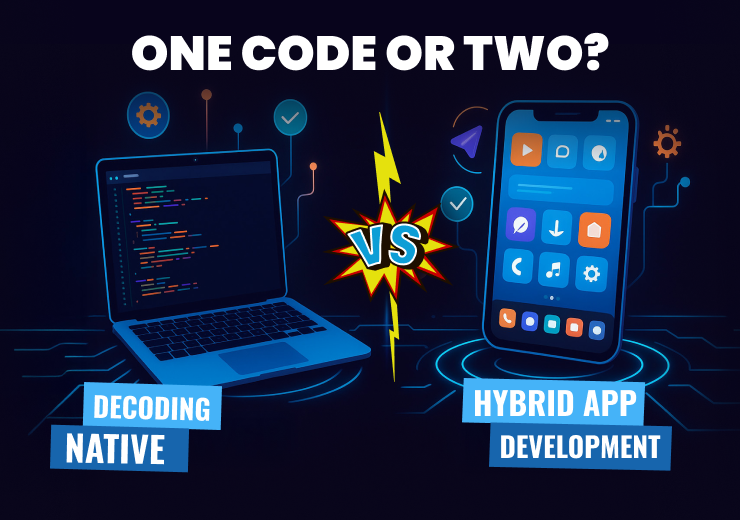
How does your brand accomplish the increasingly expanding expectations of today’s consumers? Turn to blockchain for business ! This revolutionary technology boosts security, streamlines operations, enhances transparency, and establishes trust across industries. Whether it’s enabling smart contracts, optimizing supply chains, safeguarding digital identities, or powering up decentralized finance, blockchain can help your business innovate and gain an edge in today’s digital age. As we approach 2025, businesses should leverage the emerging blockchain trends to be ahead of the curve and guarantee long-term sustainability. From AI-driven smart contracts to decentralized finance (DeFi), blockchain is poised to reimagine how businesses operate. Needless to say, the future of blockchain is brimming with limitless potential. But before you take the leap to revolutionize your business, delve into what blockchain is and how the latest trends can future-proof your brand for long-term success. What Is Blockchain? Blockchain refers to an immutable, shared ledger that facilitates the overall process of recording transactions and monitoring assets in today’s business network. Why is blockchain crucial? Every business, these days, runs on data. The faster data is received and the more accurate the process is, the better ! Blockchain is perfect for delivering that data, as it offers shared, observable, and immediate information that’s stored on an immutable ledger that just permissioned network members can access. Blockchain cybersecurity and networks can monitor orders, accounts, payments, production, and more ! And, as members share just a single view of the truth, you can witness every detail of a transaction end-to-end, providing you with greater confidence and more opportunities and efficiencies. Unlock the Potential of These Emerging Blockchain Trends in 2025 Future-ready means blockchain-ready ! In today’s rapidly evolving tech landscape, leveraging blockchain can provide early-mover advantages, enhancing transparency, efficiency, and security across industries. Let’s explore how you can future-forward your business by tapping into the latest and most anticipated blockchain trends of 2025 – 1. Adopting AI-Integrated Smart Contracts Smart contracts are already revolutionizing industries by automating processes, minimizing costs, and boosting security. In 2025 and even beyond, the advanced AI-driven smart contracts will level up automation by enabling adaptive, self-learning agreements that can predict and respond to real-time data changes. Businesses should start integrating AI with smart contracts to streamline operations, improve accuracy, and reduce risks associated with human intervention. 2. Leveraging Decentralized Finance (DeFi) Decentralized finance (DeFi) has reimagined financial transactions by eliminating intermediaries and providing greater transparency. With blockchain digital transformation and advancements, DeFi solutions are now expected to be more scalable and secure in 2025. Businesses can make them future-forward by embracing DeFi solutions for lending, investments, and payments, ensuring financial better inclusivity and more efficiency. 3. Exploring Blockchain Interoperability One of the biggest drawbacks of blockchain adoption has been the lack of interoperability between multiple networks. The emergence of cross-chain solutions in 2025 will help businesses seamlessly exchange assets and data across various blockchain platforms. Every modern business should invest in blockchain interoperability to boost flexibility and maximize market reach. 4. Implementing Blockchain for Supply Chain Supply chain management is a highly promising use case for blockchain technology. In 2025, blockchain will provide enhanced traceability, enabling organizations to keep a tab on products or services in real-time, from origin to destination. Embracing blockchain supply chain will enhance transparency, improve efficiency, and reduce fraud. 5. Ensuring Data Privacy with ZKPs In this day and age of “digital everything, ” the importance of data privacy and security has become all the more paramount. ZKPs, or zero-knowledge proofs, allow transactions to be verified without disclosing any sensitive information. Organizations can explore zero-knowledge proofs to safeguard consumer data, comply with regulations, and establish more trust among stakeholders. 6. Bolstering Cybersecurity with Blockchain With cyber threats growing more sophisticated, the decentralized nature of blockchain offers robust security measures. Businesses can leverage blockchain for secure identity management, encrypted communication networks, and fraud prevention. By embracing these measures, modern businesses can protect sensitive data from cyberattacks and unauthorized access. 7. Investing in Green Blockchain Solutions Sustainability is a growing priority, and blockchain is evolving to address environmental concerns. Energy-efficient consensus mechanisms like Proof of Stake (PoS) and blockchain-powered carbon credit tracking are gaining momentum, driving greener and more responsible innovation. Businesses should adopt eco-friendly blockchain solutions to advance global sustainability goals and strengthen corporate responsibility. Embrace the Blockchain Revolution in 2025 The blockchain landscape of 2025 brings unlimited opportunities for businesses looking to embrace innovation. By leveraging DeFi, integrating AI-powered smart contracts, embracing supply chain transparency, and making security a top priority, businesses can future-proof themselves against disruption. Being ahead and above the above-mentioned blockchain trends will not just boost operational efficiency but also position organizations as industry leaders in today’s digital age. To tap into the untapped potential of blockchain, start strategizing today and stay abreast of the digital noises. Conclusion AI hallucinations highlight both the impressive capabilities and inherent limitations of current AI systems. While AI can generate useful and innovative content, it is essential to approach its outputs with critical thinking and verification. As AI continues to evolve, improving its accuracy, reliability, and ability to distinguish fact from fiction will be key to its responsible adoption. We love to hear from you Contact Us
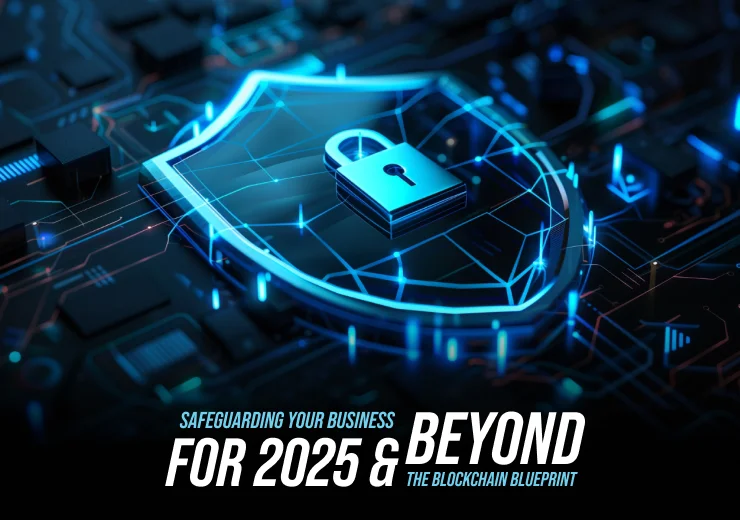
Welcome to our Contrivance Softech Pvt Ltd. We do end to end solution when it comes to design or development for your online presence.
Get In TouchMon - Sat: 8 am - 5 pm,
Sunday: CLOSED
© 2025 All rights reserved.
